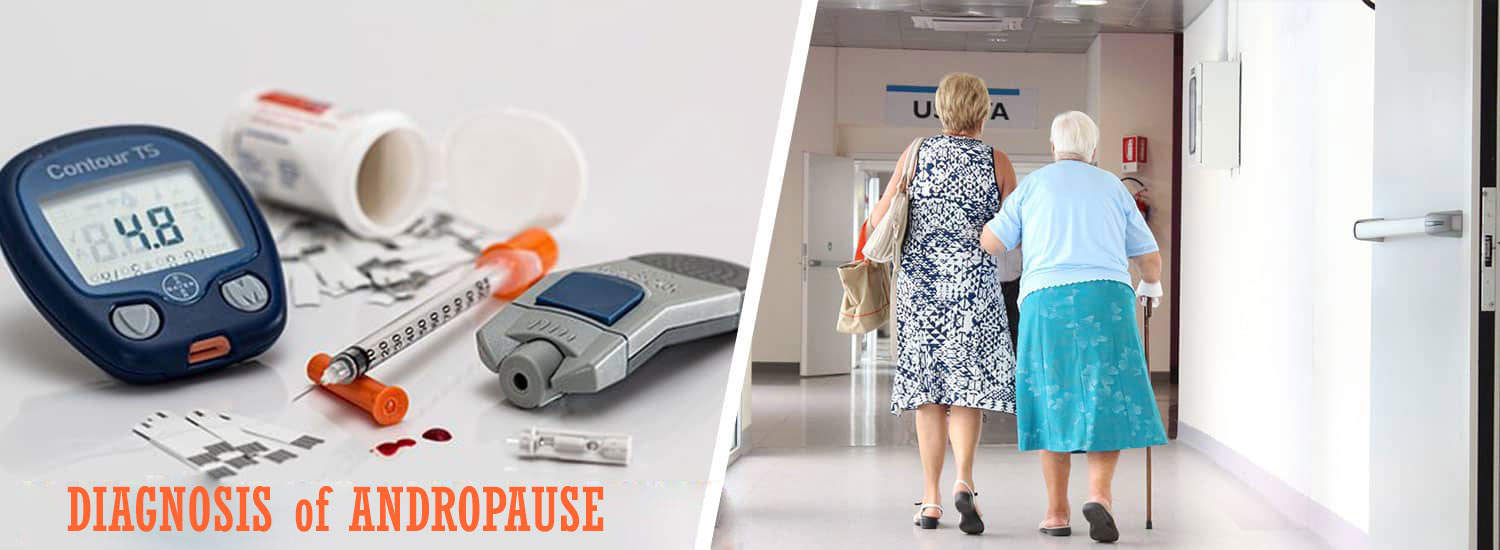DIAGNOSIS OF ANDROPAUSE

“It is not the age which leads to decline of Hormones; It is rather decline of Hormones which leads to ageing”
Ved Parkash Bansal
Due to the symptoms and signs once it is thought of Andropause, it can only be confirmed by testing the blood level of testosterone of the individual. Generally after the age of 30 the testosterone level in the body starts decreasing at the rate of 1% every year. Testosterone is investigated as total testosterone and free testosterone (bioavailable testosterone).Free testosterone is actually the real testosterone which affects the tissues and which is not bound to the sex hormone- binding globulin. There may be an increased level of sex hormone-binding globulin that binds the testosterone and makes less of it available to the tissues.Also, as men get older, there is less of a daily rhythm to the secretion of the testosterone. Younger men have higher testosterones in the morning, which then decrease as the day wears on. In older men, this curve is flattened, leading to steady low levels of testosterone throughout a 24-hour period. Here are some issues regarding testosterone that are important to remember:
1) It is not yet known what level of serum testosterone defines a deficiency in older men. Generally it is accepted that two standard deviations below the normal values for young men is considered abnormal.
2) A man may have large variations in his serum testosterone levels over time. He may have normal testosterone levels one day and have decreased testosterone levels the next, so it is important to look at hormone levels over a period of time.
3) In older men, affected organs may respond differently to androgens.
Not all men will need the same level of testosterone to maintain proper function of their brain, bone, prostate or muscle cells etc. Therefore it would be incorrect to say that there is one standard level of testosterone that should be achieved by all men. There remains significant controversy as to how best to measure testosterone levels and diagnose andropause. It is well accepted that if total testosterone is less than 200 ng/dL, a man will be considered as having a low testosterone level. If his total testosterone is greater than 600 ng/dL, low testosterone may be ruled out. More important than the level of testosterone are the symptoms and signs. A low level of testosterone carries significance only if there are symptoms and signs.
On reviewing the literature the consensus is that as compared to total testosterone, free testosterone or bioavailable testosterone carries more importance because of the fact that bioavailable testosterone acts the tissues. These measurements may only be available through specialty laboratories. Actually in most of the laboratories in India wherever testing of free testosterone is available, it is costly as compared to total testosterone. Thus many andrologists order only for total testosterone.
Timings of the taking of the blood sample is also important. However, it is widely accepted that the blood work should be done in the morning before ten o’clock to capture the potential peak values.
Women also have testosterone in their blood. As the understanding, observations and the physiological actions are establishing, most of the scientists are showing concern of this hormone in women. From my little experience I am of the pinion that women also suffer from andropause. At this stage I mention that Testosterone is the hormone of performance both in men and women.
The laboratory values of Testosterone as mentioned below are only a source of guidance to diagnose Andropause but it is very important to stress that low levels of testosterone are important only if an individual have definite symptoms.
Location
Indian Association of Age Management
c/o Naraina Medical Centre
NH-1, Community Centre, C-Block
Naraina Vihar, New Delhi 110028